
Now that April is well upon us, with flowers blossoming and holidays approaching, Ewha’s campus is getting transformed by the spring season and gaining extra visitors, especially families. Locals frequently take pictures in front of the cathedral and garden-like areas near the campus complex.

Other areas around Seoul experiencing the resurgence of flora and fauna thanks to the rain and rising temperatures include Namsangol Hanok Village and Gyeongbokgung Palace. The nature in between the streets and sidewalks is showing its spring colors – mostly green, pink and red.
Both places are surrounded by many traditional clothing rental shops where you can rent a hanbok, a traditional Korean article of clothing, for either a few hours or a day. Typically, the price for renting out for a day is higher than for a few hours. You can also choose to get your hair styled in braids and decorated with hair pins, borrow a small purse to match your hanbok or wear a traditional Korean hat. People visiting the palace and museums especially enjoy dressing up and many groups of college students were posing in front of the newly blossoming flowers for pictures.

It’s great to visit Namsangol Hanok Village after visiting the various museums in Seoul, because it helps make the Joseon era feel closer by having us experience the culture in 2D vs. 3D. There’s so much of a difference between the pictures in brochures and the recreated buildings because, even though cameras have evolved so much, the perspectives of the buildings on paper versus real life do not match up perfectly.

The Gyeongbokgung Palace is only closed on Tuesdays, while the other palaces in Korea are closed on Mondays. Near the subway station exit, there are almost always two multilingual information guides to help people find whatever they’re looking for. Each guide has always been very knowledgeable and friendly every time I’ve asked them for help. They helped my friend and I find nearby restaurants serving rice with chicken and they let us know which attractions were closed and open, marking them on a map for us.

Ever since spring began, it’s been less cloudy and the sunlight has been making it more difficult to see things outside and balance lighting in pictures. It’s also been raining more often, so it’s a good idea to bring sunglasses and an umbrella.
My friend and I took plenty of pictures and filmed a few videos for her social media. It was neat to see the traditional designs and architecture. The palace complex is huge, including the museums, the palace and garden within the walls.

The throne room is one of the main attractions here, along with the village house where events are still hosted and people can go inside to hang out. The traditional carving techniques and intricate, colorful designs give off an elegant vibe, but you can also still smell the paint and wood that went into its construction.

The complex has plenty of things to do for children, including a shop where you can get a card that you can choose a design for and customize with your name. Parents like to dress up their children, take them on walks or stroller rides and take pictures of them in front of the garden.

The National Folk Museum of Korea, which is part of the palace complex, is an especially interesting place. It has a lot of interactive exhibits where people like to pose for pictures and check out great reconstructions of traditional foods. The Folk Museum focuses on the traditional Korean lifestyle and the festivals and celebrations of Korea.

Even the streets we traversed were beautiful thanks to the spring tidings. In this part of Seoul, you can see more express and double-decker buses, while in Dongdaemun it’s more common to see intercity buses. Since this is frequented by tourists often, the prices in shops along the street tend to be higher than in the shops near Ewha’s campus. Food and beverages made using fruit are especially popular yet pricey, but that’s likely due to growing seasons and availability.

Afterward, we picked up some juice from a Korean food stand and walked to a small restaurant in one of the alleys, which had a nice ambiance. It sold interesting variations of rice with pineapple and papaya cabbage salad while playing the classical music so frequently heard here in cafes. Instead of serving water, it served light tea, likely chocolate rooibos. In Seoul, water is usually free and widely available at restaurants. At the end of the day, we certainly got our steps in and came back with plenty of pictures and snacks to spare.


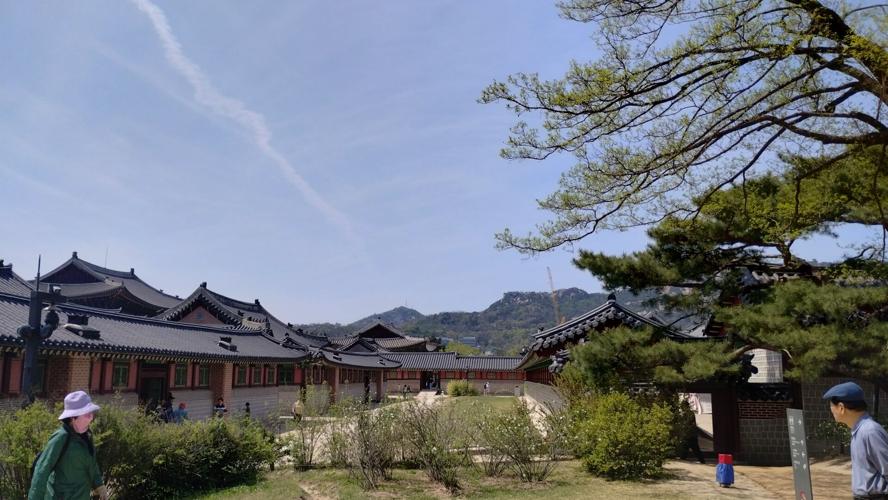
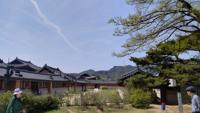

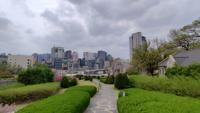

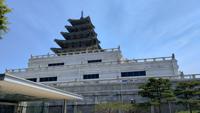

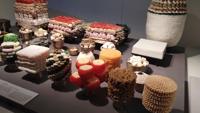

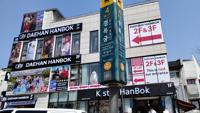

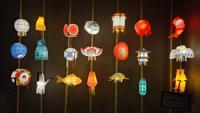

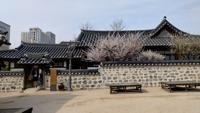

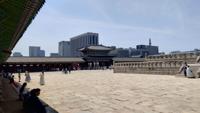



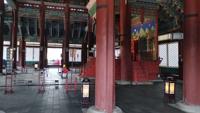





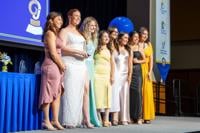
(0) comments
Welcome to the discussion.
Log In
Keep it Clean. Please avoid obscene, vulgar, lewd, racist or sexually-oriented language.
PLEASE TURN OFF YOUR CAPS LOCK.
Don't Threaten. Threats of harming another person will not be tolerated.
Be Truthful. Don't knowingly lie about anyone or anything.
Be Nice. No racism, sexism or any sort of -ism that is degrading to another person.
Be Proactive. Use the 'Report' link on each comment to let us know of abusive posts.
Share with Us. We'd love to hear eyewitness accounts, the history behind an article.
Any infractions against the above rules will result in comments not being published.